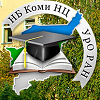Mineralogical and Geochemical Studies of Bone Detritus of Pleistocene Mammals, Including the Earliest in Northern Eurasia Humans
Abstract
Keywords
Full Text:
PDF (Русский)References
Wikipedia. Internet-encyclopedia. URL http: www.Wikipedia.org
Votyakov S.L., Kiselyova D.V., Shchapova Yu.V., Smirnov N.G., Sadykova N.O. 2009. Phyziko-khemicheskie kharakteristiki iskopaemikh kostnikh ostatkov mlekopitayushchikh i problema otsenki ikh otnositelnogo vozrasta. [Physical and chemical characteristics of fossil bone remains of mammals and the problem of assessment of their relative age] Ch. 2. IK- I radio-spektroskopiya. Ekaterinburg, Goshchitskiy, p. 82. (in Russian)
Guslitser B.I., Liyva A.O. 1972. O vozraste mestonakhozhdeniya ostatkov pleystotsenovikh mlekopitayushchikh i paleoliticheskoy stoyanki Byzovaya na Sredney Pechore [About the age of place of Pleistocene mammals remains and Paleolithic camp Byzovaya at the Middle Pechora]. Izvestiya AN ESSR, 21(3):250–253. (in Russian)
Korago A.A. 1992. Vvedenie v biomineralogiyu [Introduction to biomineralogy]. SPb, Nedra, p. 280. (in Russian)
Kosintsev P.A., Vasilyev S.K. 2009. Fauna krupnykh mlekopitayushchikh pozdnego neopleistotsena Zapadnoy Sibiri [Fauna of the large Late Pleistocene mammals of West Siberia]. Byulleten Komissii po izucheniyu chetvertichnogo perioda. 69:94–105. (in Russian)
Kosintsev P.A., Vorobyov A.A. 2000. Ostatky krupnykh mlekopitayushchikh iz mestorozhdeniya Viasher na Srednem Urale [The remains of large mammals at Viasher site in the Middle Urals]. In Pleistotsenovye i golotsenovye fauny Urala. Chelyabinsk, pp. 105–122. (in Russian)
Kosintsev P.A., Plasteeva N.A., Vasilyev S.K. 2013. Dikie loshadi (Equus (Eguus) S. L.) Zapadnoy Sibiri v golotsene [Wild Horse (Equus (Eguus) SL) of Western Siberia in the Holocene]. Zoologicheskiy zhurnal. 92(9):1107–1116. (in Russian)
Kudryavtseva A.I., Kudryavtsev V.I. 2003. Mineralnyy sostav fossiliy dinozavrov mestorozhdseniya Kolbak-Kiri (Tyva) [The mineral composition of dinosaur fossils of deposit Kolbak-Kyry (Tyva)]. Paleontologicheskiy zhurnal. 4:96–102. (in Russian)
Nikolaev V.I., Barbiery M., Davanzo C., Kuznezova T.V., Longinelli A., Sulergizky L.D., Yakumin P. 2005. Kompleksnye izotopnye issledovaniya mamontov Yakutii [Complex isotopic studies of Yakutian mammoths]. In Kvarter-2005: Materialy IV Vserossiyskogo soveshchaniya po izucheniyu chetvertichnogo perioda. Syktivkar, Geoprint, pp. 295–297. (in Russian)
Ozarovskaya O.V. 2007. Viyavlenie izmenchivosti mineralnogo sostava kostnikh tkaney pri arkheologicheskikh raskopkakh [Study of the variability of mineral composition of bone tissue during archaeological excavations]. In Materialy III Mezhdunarodnogo Simpoziuma “Biokostnye vzaimodeystviya: Zhizn i kamen”. SPb. pp. 134–137. (in Russian)
Poshekhonova O.E. 2011. K srednevekovoy paleontologii Yuzhno-Tayozhnogo PriIrtyshya (po materialam IX–XVIII vekov na territirii Krasnoyarskogo arkheologicheskogo kompleksa) [To the medieval paleontology of the “Southern Tayga” PriIrtyshye (based on sources of IX-XVIII centuries in the Krasnoyarsk archaeological complex)]. Vestnik arkheologii i etnografii, 2(15):152–166. (in Russian)
Ponomarev D.V. 2001. Krupnye mlekopitayushchie evropeiskogo Severo-Vostoka v pozdnem pleystotsene i golotsene. [Large mammals of the European Northeast in the Late Pleistocene and Holocene]. Syktyvkar, KNZ UrO RAN, p. 48. (in Russian)
Ponomarev D.V. 1998. Nekotorye dannye o pleistotsenovikh khobotnykh evropeyskogo Severo-Vostoka [Some data on the Pleistocene Proboscideans of European Northeast]. Syktyvkarskiy paleontologicheskiy sbornik, 3:88–95. (in Russian)
Porucheniya Prezidenta RF po itogam zasedaniya Soveta po nauke i obrazovaniyu 8.12.2014 g. Ofitsialny sayt Prezidenta RF. URL: //kremlin.ru/acts/assignments/orders /47367
Rosanov A.Yu. 1999. Sovremennaya paleontologiya [Modern paleontology]. Sorosovskiy obrasovatelnyy zhurnal. 1:47–55. (in Russian)
Silaev V.I. Ponomarev D.V., Kiseleva D.V., Smoleva I.V., Simakova Yu.S. 2014. Pozdnepleistotsenovye krupnye mlekopitayushchie Timano-Pechorskogo regiona: opyt mineralogo-geokhimicheskogo issledovaniya kostnogo detrita [Large Late Pleistocene mammals of Timan-Pechora region: an experience of mineralogical and geochemical studies of bone detritus]. In Problemy i perspektivy sovremennoy mineralogii (Yushkinskie chteniya-2014). Materialy mineralogicheskogo seminara s mezhdunarodnym uchastiem. Syktyvkar, Geoprint, pp. 195–199. (in Russian)
Smirnov V.I., Votyakov S.L., Sadikova N.O., Kiseleva D.V., Shchapova Yu.V. 2009. Physiko-khimicheskie kharakteristiki iskopaemykh kostnikh ostatkov mlekopitayushchikh i problema otsenki ikh otnositelnogo vozrasta. [Physical and chemical characteristics of mammals fossil bone remains and the problem of assessment of their relative age]. Ch. 1. Termicheskiy i mass-spektroskopicheskiy elementnyy analiz. Yekaterinburg, Goshchitskiy». p. 118. (in Russian)
Sharkov A.A. 2002. Unikalnye mestorozhdeniya urana [Unique uranium deposits]. Priroda. 3:3–12. (in Russian)
Yushkin N.P., Silaev V.I., Garkov V.A., Filippov V.N., Lutoev V.N., Simakova Yu.S. 2013. Mezozoyskie koprolity: mineralogo-geokhimicheskie svoystva i otnoshenie k prognozu fosfatonosnosty [Mesozoic coprolites: mineralogical and geochemical properties and the relationship to the forecast of phosphatiferousness]. In Problemy mineralogii, petrografii i metallogenii. Trudy nauchnikh chteniy pamyati P.N. Chirvinskogo. Perm, Permsk. Univ., 16:26–52. (in Russian)
Yanin B.T. 1983. Osnovy tafonomii. [Fundamentals of taphonomy]. Moskva, Nedra, p. 184. (in Russian)
Bachura, O.P., Kosintsev, P.A. 2007. Late Pleistocene and Holocene small- and large-mammal faunas from the Northern Urals. Quaternary International. 160(1):121–128. doi: 10.1016/j.quaint.2006.09.013
Bence Viola T., Slepchenko S.M., Razhev D., Hublin J.-J. 2014. The morphology of the Ust-Ishim femur. Supplementary Information 3. Nature, 514(7523):11–18. doi: 10.1038/nature13810
Bocherens, H. 2003. Isotopic biogeochemistry and the paleoecology of the mammoth steppe fauna. In Advances in Mammoth research (Proceedings of the Second International Mammoth Conference, Rotterdam, May 16–20 1999). Deinsea, pp. 57–76.
Bocherens H., Billion D., Paton-Mathis M., Bonyean D., Tonssaint M., Mariotti A. 1999. Palaeoenviromental and palaeodietary implications of isotopic biogeochemistry of late interglacial Neandertal and mammal bones in Scladina Cave (Belgium). Journal of Archaeological Science. 26(6):599–607. doi: 10.1006/jasc.1998.0377
Brik A.B. 2010. Magnetic biominerals localized in brain tissue: anomalous properties, possible functional role and synthetic analogues. Ukr. J. Phys. Opt. 11, Suppl.1, pp. 46-61.
doi: 10.3116/16091833/11/2/S46/2010
Harrison R.G., Katzenberg M.A. 2003. Paleodiet studies using stable carbon isotopes from bone apatite and collagen: examples from Southern Ontario and San Nicolas Island, California. J. Anthropolog-ical Archaeology. 22(3):227–244. doi:10.1016/S0278-4165(03)00037-0
Filippo C., Fu Q., Prufer R. 2014. Heterozygositi. Supplementary Information 12. Nature, 514(7523):69–72. doi: 10.1038/nature 13810
Fu Q., Kelso J. 2014. 2014. Mitochondrial Genome Analysis of Ust-Ishim. Supplementary Information 8. Nature, 514(7523):46–50. doi: 10.1038/nature13810
Fu Q., Kelso J. 2014. Neandertal ancestry in Ust-Ishim. Supplementary Information 16. Nature, 514(7523):93–96. doi: 10.1038 /nature13810
Fu Q., Kelso J., Slatkin M., Jay F. 2014. Analysis of inbreeding in Ust-Ishim. Supplementary Information 13. Nature, 514(7523):73–77. doi: 10.1038/nature13810
Fu Q., Kelso J., Reich D. 2014. Relationship of Ust-Ishim to other humans. Supplementary Information 11. Nature, 514(7523):63–68. doi: 10.1038/nature13810
Fu Q., Lаchman M., Paabo S., Kelso J. 2014. Denisovan ancestry in Ust-Jshim. Supplementary Information 17. Nature, 514(7523): 97–102. doi: 10.1038/nature13810
Fu Q., Li Н., Moorjani P., Jay F., Slepchenko S.M., Bondarev A. A., Johnson P.L.F., Aximu-Petri A., Prüfer K., Filippo C., Meyer M., Zwyns N., Salazar-García D.C., Kuzmin Ya.V., Keates S. G., Kosintsev P.A., Razhev D.I., Richards M.P., Peristov N.V., Lachmann M., Douka K., Higham T.F.G., Slatkin M., Hublin J.-J., Reich D., Kelso J., Viola T.B., Pääbo S. 2014. Genome sequence of a 45000-year-old modern human from western Siberia. Nature. 514(7523):445–449. doi: 10.1038/nature13810
Fu Q., Reich D., Kelso J. 2014. Relationship to Present – day Humans inferred from PCA, ADMIXTURE, and TreeMix. Supplementary Information 10. Nature, 514(7523):54–62. doi:0.1038/nature13810
Iacumin P., Bocherens H., Chaix L. 2001. Keratin C and N stable isotope rations of fossil cattle horn from Kerma (Sudan). Quaternario. 14 (1):41–46.
Ikeya M. 1993. New Applications of electron spin resonance. Dating, Dosimetry, Microscopy. World Scientific, Singapore-New Jersey-London-Hong Kong, p. 500.
Keates S. G., Razhev D. I., Slepchenko S. M., Kyzmin Ya. V., Bence Viola T. 2014. Early modern humans in Eurasia. Supplementary Information 2. Nature, 514(7523):19–22. doi: 10.1038/nature13810
Kosintsev P., Danukalova G., Osipova E., Yakovlev A., Alimbekova L., Popova-Lvova M. 2014. Palaeoenviroment of the Late Pleistocene-Holocene interval in the Tanalyk river valley of the Southern Trans-Ural region (Russia). Quaternary International. 284:74–84. doi:10.1016/j.quaint.2011.10.034
Kutzehberg M.A., Krouse H.R. 1989. Application of stable isotope variation in human tissues for problems of identification. Canadian Society of Forensic Science. 22(1):7-20.
Kuzmin Ya.V., Bondarev A.A., Kosintsev P.A., Douka K., Bence Viola T. 2014. The Ust-Ishim locality: Geology, Paleontology, and Radiocarbon Dating. Supplementary Information 1. Nature, 514(7523):1–5. doi: 10.1038/nature13810
Landis W.J. 1995. The strength of a calcified tissue depends in part on the molecular Structure and organization of its constituent mineral crystals in their organic matrix. Bone. 16(5):533–544. doi: 10.1016/8756-3282(95)00076-P
Li H., Fu Q., Reich D. 2014. A novel estimate of the human mutation rate. Supplementary Information 14. Nature, 514(7523):78–86. doi: 10.1038/nature13810
Richards M.P., Pettit P.B., Stiner M.C., Trinkaus E. 2001. Stable isotope evidence for increasing dietary breadth in the European mid-Upper Paleolithic. PNAS. 98(11):6528–6532. doi: 10.1073/pnas.111155298
Salazar-Garsia D., Richards M.P. 2014. Stable isotope analyses of the Ust-Ishim femur. Supplementary Information 4. Nature. 514(7523):445–449. doi: 10.1038/nature 13810
Svendsen J.I., Heggen H.P., Hufthammer A.K., Mangerud J., Pavlov P., Roebroeks W. 2010. Geoarchaeological investigations of Paleolithic sites along the Ural Mountains – On the northern presence of humans during the last Ice Age. Quatern. Sci. Rev. 29(23): 3138–3156. doi: 10.1016/j.quascirev.2010. 06.043
Veins A. 2003. Mineralization in Organic Matrix Frameworks. Rev. Miner. Geochim. 54(1): 249–289. doi: 10.2113/0540249
Vlasimsky P. 2000. Calcium enriched rooks in the Neoproterozoic sequence, Lasetice uranium mine, Pribram ore district. Vestnik Ceskeho geologickeho Ustavu. 75(3):261–264.
Zwyns N., Kuzmin Ya., Bence Viola. 2014. The Ust-Ishim modern human: archaeological implications. Supplementary Information 5. Nature, 514(7523):23–25. doi: 10.1038/nature13810
DOI: http://dx.doi.org/10.17072/psu.geol.29.6
Refbacks
- There are currently no refbacks.















